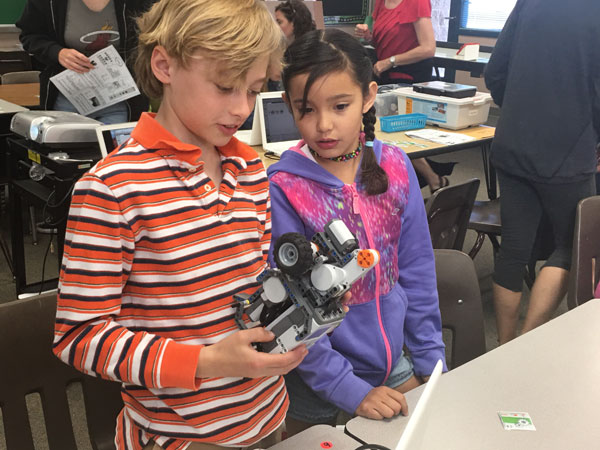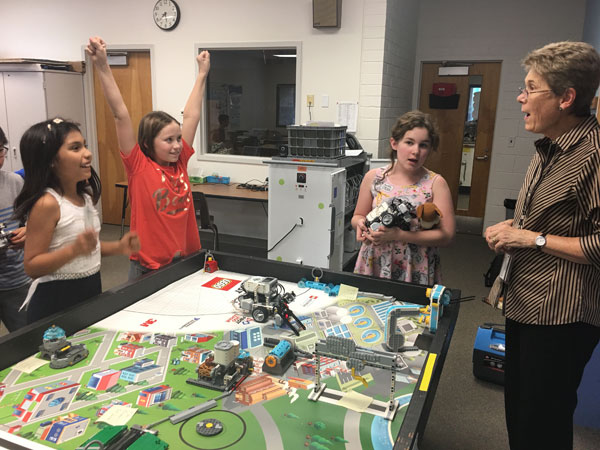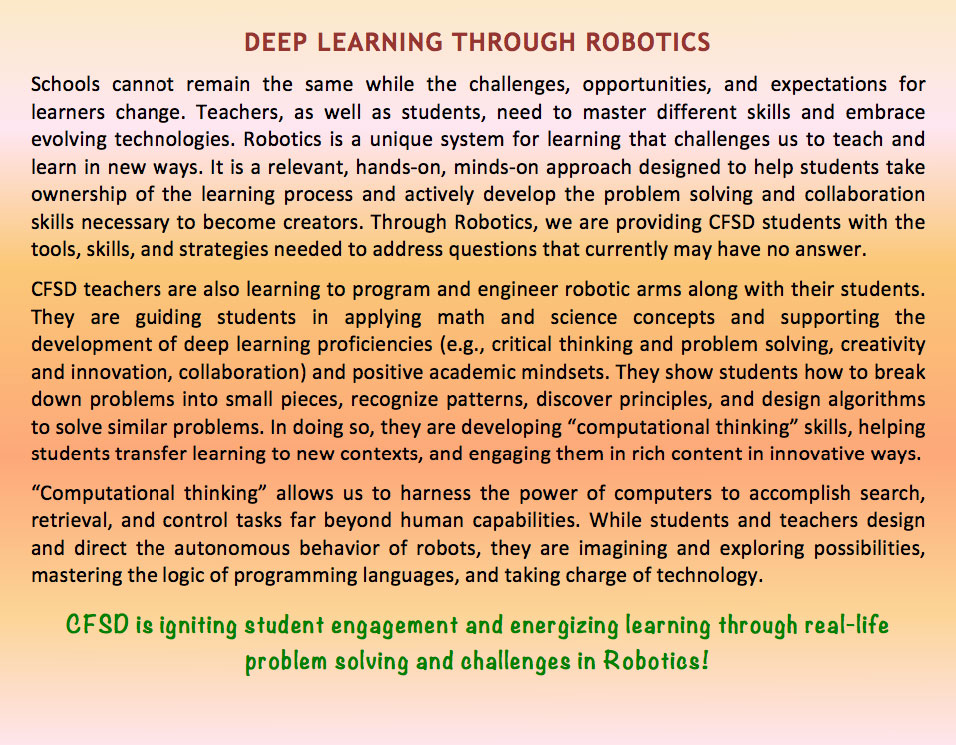
SCOPE AND SEQUENCE FOR ROBOTICS UNITS GRADES 2 - 5
Class periods for Robotics in grades 2-5 are 1-2 hours in duration, once a week for 8 weeks. During the first class, students are introduced to breakthrough technologies, trends, and current issues in robotics and they are presented with a problem to solve collaboratively.
For the next 7 weeks, partners share a robot and a computer, and teams progress through the four levels of programming and engineering challenges at their own pace. Students receive certificates when they accomplish the benchmark tasks at each level. Students receive mission points for certain tasks and earn a Learner’s Permit and Operator’s License. Finally, they have the opportunity to become a Robotics Engineer. Second and third graders use LEGO Mindstorms NXT, and fourth and fifth graders use the EV3 robots and software.



Click the links below to view the Robotics Scope and Sequence for Grades 2 – 5 and examples of the mission task sheets for earning Mission Points, a Learner’s Permit and Operator’s License, and finally, Robotics Engineer.
COLLABORATION IN ROBOTICS
Collaboration is an essential component of a problem-based educational robotics program. Challenging, open-ended tasks encourage students to work together and share ideas. Peer support and interaction lead to increased confidence, deeper learning, and new and better ideas.
The skills for effective collaboration must be taught, modeled, and practiced over time. In Robotics it starts with how to share a computer and a robot. The metaphor of a “driver” and a “navigator” provides a framework for defining and understanding the expectations for proficiency. Robotics is the “vehicle” in which students can learn how to discuss and disagree, negotiate and compromise, fail and succeed, when to take turns, and when to take charge.
Collaboration skills in Robotics are measured using the rubric below. The performance areas in the Collaboration rubric are the same as those found in CFSD’s deep learning proficiency (DLP) rubric for Collaboration.
Click on the link to view the Collaboration rubric (PDF) used in Robotics.
Click on the link to view the Pair Programming (PDF) video from Code.org.
Foothills News, February 3, 2016: Robotics Program Finds Success in Catalina Foothills Schools (PDF)
Charlotte Ackerman, Kelly Taylor, Noah Mickey-Colman and Tiffany Wiley CFSD STEM Integration Specialists, facilitate, with assistance from classroom teachers, all of the K-5 elementary Robotics classes at Canyon View, Manzanita, Sunrise Drive, and Ventana Vista Elementary Schools. They are also coaching after-school First LEGO League (FLL) teams.




